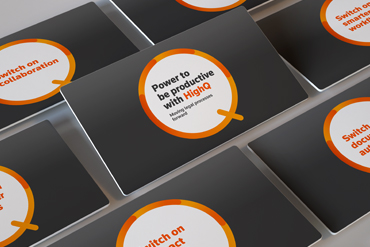In 2020 and 2021, the COVID-19 pandemic forced the world of work to undergo an extremely large experiment. In a matter of weeks – in some cases, just days – entire firms transitioned from in-office to remote working. The positive effects on productivity, health, job satisfaction, and work-life balance took many by surprise, inspiring a new normal that many workplaces embraced as the world emerged from lockdown.
As firms adjust to post-pandemic life, leaders must make important decisions about future work styles. Some firms may go back to full-time in-person work; others may choose to allow working from home full-time. But, many firms are implementing hybrid working environments which combine the two. Accenture’s Future of Work Study 2021 surveyed just under ten thousand hybrid workers, and 83% said that they prefer a hybrid model which allows them to work remotely at least 25% of the time.
Hybrid working is an adjustment that will require technological optimizations to keep everyone collaborating and communicating efficiently and effectively. While a hybrid workplace has multiple benefits, these cannot be realized without the right legal project management (LPM) solution. Here are four areas that can be optimized by implementing the right solution at your firm.
1. Onboarding
It is important for new employees to feel connected to their colleagues and have a thorough understanding of the firm and their individual responsibilities. Knowing their firm has taken the time to implement strong onboarding strategies can help them feel valued. An effective virtual onboarding process is crucial to hiring the best available talent and keeping them around long-term. By automating time-consuming onboarding tasks, you leave yourself with more time to focus on making sure your employees feel equipped to begin their new roles.
Remote onboarding also offers new hires unique opportunities for flexibility and convenience. But, you need a collaborative platform that keeps all employees and managers in the loop, gives them immediate access to the right information and instills confidence in their readiness to adapt.
2. Collaboration
Team members need to be able to access legal documents and materials simply and securely, no matter where they’re located. All law firms involve a degree of document collaboration, which can be challenging given the amount of work undertaken in these documents. Your firm should have technology that allows everyone to collaborate seamlessly, taking the work out of teamwork.
The right LPM tool can help your firm:
- Deliver engaging content experiences and client portals
- Create a single source of truth for legal information with real-time updates, activities, tasks and much more
- Easily manage, share and collaborate on sensitive documents and content in secure project workspaces
- Visualize and share project status, budget and other important metrics, allowing full transparency for all parties.
3. Productivity
If implemented properly, hybrid work models can increase productivity. According to Forbes, 88% of employees who have more control over how and where they work report greater job satisfaction and hence better productivity in their working day.
Two additional studies revealed that remote and hybrid employees were 22% happier than onsite office workers and more likely to remain in their current jobs. They experienced less stress and more productivity when working from home. 56% of respondents cited mental health improvements, better work-life balance and more physical activity, pointing to significant health benefits.
It’s clear that giving employees the freedom and flexibility to work where they want can make them happier and more productive. But mundane, repetitive tasks like dealing with a full inbox and developing tasks and timelines can still make for time-consuming, unproductive work. Team members’ success with hybrid work requires proper tools for communication, feedback, and collaboration. Modern legal work solutions can help create a truly efficient hybrid workplace by helping employees effectively prioritize, organize, and coordinate projects.
4. Client communication
Clients are happier when their attorneys actively communicate important details to them and provide them with a space where they can access information on their own. Using the most efficient and secure tools can give clients confidence that the lines of communication are constantly open and that their information is secure.
Having a secure place where your firm can share files, communicate, and collaborate is crucial in a hybrid working environment. It enables everyone to do their best work – in the office or at home. For the hybrid model to be successful and to realize all the benefits it offers, it’s crucial that you optimize your legal technology – not just for your firm, but for your clients.
Optimize your hybrid work environment
The legal project management software you implement at your firm has the power to increase your firm’s value for potential new talent, improve the experience for current clients, and keep attorneys happy – no matter where they are working from.











